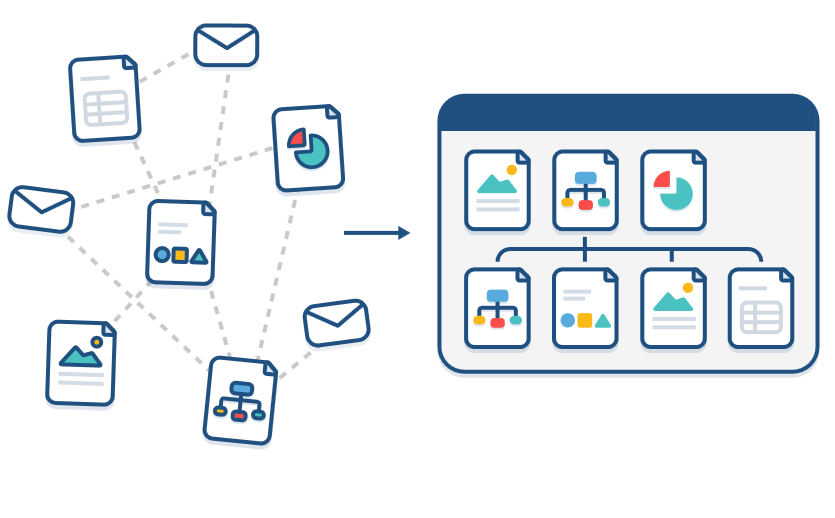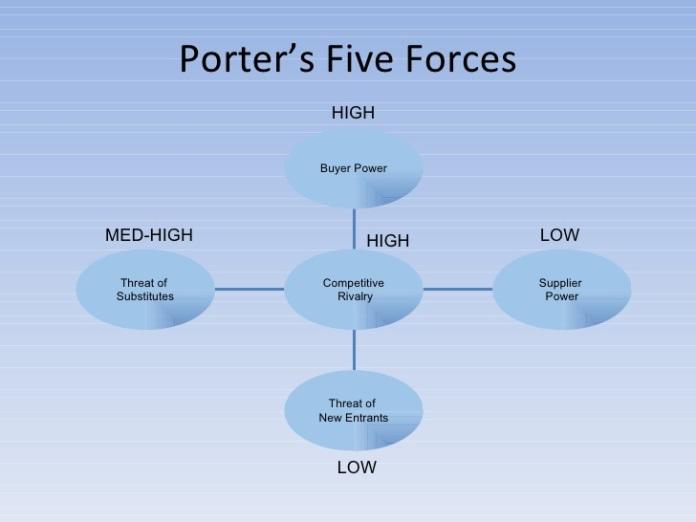Introduction
The demands and challenges of the world’s population are increasing rapidly. These needs range from organisational inadequacies to corruption, from environmental conservation to disease or from transport to technology. This aspect means that entrepreneurs have an array of opportunities to create a business venture. Entrepreneurship entails not only the introduction of a business idea, but it also targets the development of a unique venture that serves the people and creates a more desirable impact (Letam 2014).
Over the past decade, management innovation alone is attributable to many performance thresholds achieved by companies. For instance, Toyota came up with the lean management model, which was in 1990 defined as a multi-faceted concept used by organisations to enhance production (Cox Pahnke et al. 2014). Most companies possess formal criteria for product innovation, and many have R&D teams that engage in scientific explorations. Besides, every company has shown efforts to rebuild its business approaches to increase pace and efficiency. This report explores why management innovation is inevitable and unique coupled with showing how an organisation can benefit from management innovation using collaborative tools.
The innovation idea
The particular innovation opportunity identified in this report entails a collaboration tool that allows people to work from different locations but still function as a team. This innovation will allow people or teams to improve productivity and stay more organised. This collaboration tool is intended to enable the teams to work together remotely. Similar products in this line of innovation include Dropbox, Google documents, Skype, and Google Hangouts.
These current tools have facilitated working together from different locations, but it has been a challenge shifting from the regular tasks to a complex project. This innovation is intended to be more users friendly and enhance efficiency beyond what has been available in the market. This device can be used as a collaborative tool to increase efficiency within organisations. This innovation keeps everything in an organised and easily accessible manner. (See Appendix 1).
Target market and competitors
Given the contemporary challenges, organisations must adopt this management approach since it increases flexibility and efficiency (Letam 2014). In other words, the market for this innovation is extremely large. Nearly in all aspects of human activities, this innovation is relevant. For instance, it can be used in health, education, transport, security, manufacturing or tourism sectors. Ideally, in all aspects of life where teamwork is entailed, this innovation is viable. College students can use this tool to accomplish group assignments as well as receive feedback from their instructors. A student can use this innovation tool to socialise with friends, and learn in the mainstream classrooms. Business people will be highly intrigued by this service.
The Internet has offered business entrepreneurs the opportunity to access the global market (Trott 2008). Similarly, the proliferation of smartphones has led to the introduction of collaboration apps such as Skype and Google Hangouts. Websites such as eBay and Amazon sell collaboration tools devices internationally. The rise in demand has provoked entrepreneurs to delve further and try innovations that will meet the rising demand sufficiently. This innovation intends to build software that enables access to all documents, files, and all the proceedings taking place within organisations.
Industry analysis and trends
Michael Porter suggests five fundamental external factors that influence plans in any industry. Porter’s five forces include:
- Barriers to market entry
- Threat of substitutes
- Rivalry
- Bargaining power of suppliers
- Bargaining power of buyers
When analysing these factors, it is important to determine or categorise each risk factors as having a low, medium, or high effect (Kahn 2011). Based on the current incumbents such as Google Drive and Dropbox the field seems to be profitable and perfectly competitive. High barriers to entry can only be caused by the capital costs of venturing into the market.
The threat of substitute products or services is also low in this case. Teleconferencing services increase collaboration within teams. Few products offer services that can compete with what is offered by Dropbox or Google drive, but with this potential innovation, this aspect will change. Rivalry in the market is expected to be high. Currently, Dropbox and Google Drive are improving their software to include more features. The bargaining power of buyers is relatively low since they do not have experience with the product. Buyers have limited ability to put the organisation under pressure. With time, buyers might gain high bargaining power if supply outstrips the demand. On the other side, the bargaining power of suppliers is expected to be high since they are limited number of similar products and close substitutes.
PEST analysis
According to Cox Pahnke et al. (2014), PEST analysis is a concept used in organisations to determine the state of the environment they are operating in or are intending to introduce a product or service. PEST involves various forces that include:
- Political situation
- Prevalent economic trends
- Social environment
- Technological
- Legal aspects
Economic factors such as inflation rate, interest rates, and economic growth patterns should also be considered when introducing this innovation. This move is necessary to determine if a certain innovation is capable of making a positive impact on the market. Social factors track the social environment of the available market. Technological factors entail aspects of a certain innovation that may influence the industry either positively or adversely. Legal factors entail safety standards, consumer laws, and labour laws among other policies that a certain country or an organisation upholds (Liu & Bi 2013).
Justification for this innovation
In most cases, when handling bigger and complex projects, sending a direct link is tasking. Clients or users end up searching through old emails to access a Dropbox link. This innovation aims to restructure the review folder to be more detailed. Appendix 2 shows a model of the innovation’s top page of the shared folder. This milestone will be achieved by adding a few rows of hierarchy to speed accessibility. Even though this is more of a product innovation, its primary purpose is to enable a breakthrough in coordination and organisation.
Following the emerging trends in global business such as offshoring, online shopping among other cross-border activities, competition has spiked to a higher level (Liu & Bi 2013). Business organisations have been compelled to advocate for integrity and quality than ever before. In a bid to avoid laxity and ensure integrity, many organisations need a collaboration tool. This tool will increase supervision and consultation since each member of a team can view what a colleague is doing.
Differentiation
This product is unique as compared to what has been offered in the market. Skype and Google Hangouts have been designed to favour social networking more that organisational networking. This innovation should enable IT administrators to track which users open the folder and at what time. Besides, it should grant or withhold file accessibility permissions. The software should also enable administrators to manage particular files in a manner that allows editing but restricts editing.
This innovation intends to develop software that allows the creation of shared folders, which are visible on every team member’s computer. Unlike Dropbox, this innovation will include visuals of the proceedings as well as materials uploaded or accessed by any member. It is a flexible innovation since users can access the services from any Internet browser and manage to ensure consultations without having to make physical movements. This product will be worth the investment since most organisations will have found a solution to team efficiency. Reducing face-to-face consultations reduce time wastage and costs incurred due to inefficiency.
Market scope
Various segmentation methods will be used to gain market access for this product. The segmentation strategies include:
- Crowdsourcing strategy
- Dominate best customer strategy
- The lightweight strategy
- The lead bell strategy
Crowdsourcing is a strategy used by new business to create awareness about their product or service(Kahn 2011). This strategy entails allowing the market to determine which clients are best for the product. This goal is attained through interacting with many customers and track customer segments that manifest satisfaction with a certain product with the help of customer satisfaction data. Dominate best customer strategy entails the idea to explore the potential customer base to identify the best customers and their traits. The idea is to detect the characteristics that make them the best, and then track customers that manifest similar characteristics.
The lightweight strategy is commonly used today in the competitive environment. The idea entails issuing free services to a potential customer base, issuing bonuses based on referrals, or selling at a low level to capture customers. The idea is to introduce paid services once the business gains a solid set of subscribers. Lastly, the lead bell strategy is an effective way for new businesses to acquire customers. The objective of this strategy is that many prospects will turn to loyal customers once a business has few lead bell customers leading the way. Furthermore, lead bells could be the technology pioneers that other businesses look to before making significant decisions(Trott 2008).
In this light, venturing in introducing a collaboration device that allows inter-organisational cooperation for simple and complex tasks can be a large milestone in ensuring management efficiency. For instance, open source development model used by Linux Company has proved to be an effective approach for increasing efficiency through coordinating people working in different locations (Cox Pahnke et al. 2014). As this example indicates, management advancement can lead to a lasting benefit to a particular company and foster a seismic change in company leadership. This collaboration tool is founded on a novel principle that seeks to challenge the status quo. This innovation is systemic, entailing some procedures and it is a progressive invention where benefits accumulate over time. It is through enforcing cooperation that a company will be able to stand out in the 21st century.
Cost
Just like Dropbox and Google Hangouts, this innovation is intended toshow the history of changes made and by which user. Creating such innovation is expected to be costly. First, the production process of electronic devices requires a huge capital investment, highly skilled labour force and expenses incurred during licencing. Creating an innovation involves a series of trials before the product is introduced in the market. The costs incurred during trials cannot be recovered so the stress of investing heavily can sometimes seem too much. Furthermore, even when the product is finished, the process of creating awareness is expensive. Introducing new services or products in the market requires extensive advertisement through the media. An advertisement is meant to influence the target users. To gain market accessibility, the innovating company needs to hire people who can influence potential clients to feel informed and involved.
Success factors
The critical success factors for this innovation include:
- People
- Purpose
- Process
- Physical resources
- Customers
According to Cox Pahnke et al. (2014), innovation has to consider all these five aspects to survive the market competition. People are pillars that make up the organisation. In this case, the people entail software and mechanical engineers, research teams, marketers and support staff. The purpose entails the rationale for organising and working as a team towards a defined goal. When workers get to understand each other better, harnessing their intellect and increasing collaboration becomes easy.
The process entails the roles each person pursues to fulfil the goals. The process might involve specific skills of experts and marketing ideas. Physical resources involve the primary elements that must be available for the project to commence. These resources include an assembly, the needed equipment, and funds to pay the bills and employees (Kahn 2011). Finally and most important are the clients. Every entrepreneur seeks to serve the interests of the people outside the organisation who are ready to purchase goods and services provided by the organisation.
Challenges
When introducing a new system of collaboration in an organisation, it might not be easy since change affects every perspective of business. While increasing collaboration, eliminating laxity might be necessary to ensure the progress of any company (Cox Pahnke et al. 2014). However, managers are likely to encounter some barriers while introducing this change. Furthermore, the cost of implementation is predicted to be very high especially for large organisations consisting of a wide variety of people. Good planning is needed to ensure that this change does not lead to more problems than benefits.
Personal reflections
Having schooled at a very technologically advanced institution was an opportunity to learn through consulting my colleagues and lecturers. The idea to learn to engage in team activities developed out of the passion for sharing views regarding coursework and teacher feedback. However, my efforts were in most cases insufficient and untimely due to lack of collaborative tools.
Similarly, physical consultations were of little help due to lack of time during school hours. Out of the passion for enhancing communication and cooperation, I thought of embarking on a project to come up with software with the capability to interlink people using computers or smartphones. Although creating collaboration tools for complex activities has proved many entrepreneurs a complicated task, given time and right resources this could be a possibility in the near future.
Conclusion
In a world swarming in evolving management difficulties, each organisation needs to encourage change through innovation. There is always an opportunity when challenges arise. As identified, the challenge of cooperation and misinterpretation can be turned into an opportunity through innovation. Having a collaborative tool is a huge management breakthrough regarding time and cost efficiency. This software is the best collaborative tool that can be used to increase quality while maintaining production at desirable levels. When all workers are in a position to collaborate in the preferred task, the problem of laxity is eliminated, which minimises errors. When errors are limited, production becomes efficient and time conscious.
Reference List
Cox Pahnke, E, McDonald, R, Wang, D & Hallen, B 2014, ‘Exposed: venture capital, competitor ties, and entrepreneurial innovation’, Academy of Management Journal, vol. 58, no. 5, pp.1334-1360.
Kahn, K 2011, Product planning essentials, M.E. Sharpe, Armonk.
Letam, D 2014, ‘Work habit, risk-taking ability, and entrepreneurial success’, Journal of Business and Management, vol. 16, no. 4, pp.79-82.
Liu, W & Bi, K 2013, ‘Dynamic comprehensive evaluation of knowledge innovation capability of enterprises’, Journal of Applied Sciences, vol. 13, no. 8, pp.1392-1396.
Trott, P 2008, Innovation management and new product development, Prentice Hall, Harlow.
Appendices
Appendix 1

Appedix 2

Appendix 3
